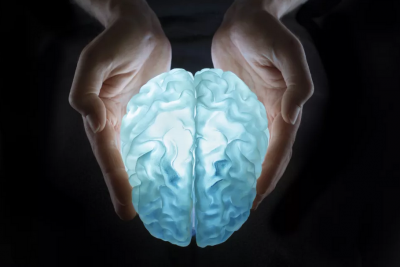SPACE — The human brain changes with age and growth. But what happens to the human brain after a long time in space?
In a new study by the European Space Agency (ESA) and the Russian Space Agency, Roscosmos, researchers explain how cosmonaut brains change after traveling into space. They found the cosmonaut’s brain was almost ‘reset’ and there was a shift in fluid and a change in shape. This research has been published in the journal Frontiers in Neural Circuits Friday, February 18, 2022 edition.
These changes can last for months after a person returns to Earth. “The strange changes in the brain that the team observed were very recent and very unexpected,” said the study’s lead author, Floris Wuyts, a researcher at the University of Antwerp in Belgium. Space.com.
Scroll to read
Scroll to read
An international team of researchers studied the brains of 12 male cosmonauts just before and after their flight to the International Space Station (ISS). They also observed the brains of the cosmonauts after seven months back to Earth.
All of the cosmonauts in the study took part in the long flight, averaging 172 days or more than five and a half months. Wuyts said they initially focused on neuroplasticity research to see how the brain adapts in space flight. However, the team also ended up focusing on connectivity within the cosmonaut’s brain.
“With this paper (on) connectivity, we are finally approaching the answer regarding neuroplasticity,” he said.
To achieve this, the team used a brain imaging technique called fiber tractography, a 3D reconstruction technique that uses data from diffusion MRI (magnetic resonance imaging), or dMRI scans to study structures and connectivity within the brain. “Fiber tractography provides a kind of brain wiring scheme. Our study is the first to use this particular method to detect changes in brain structure after space flight,” said Wuyts.
An MRI can see structures at the level of gray matter and white matter and the fluid in the brain, called cerebrospinal fluid (CSF). After spaceflight, this brain structure appears to change, mainly due to deformations caused by fluid shifts that occur in space. Interestingly, the team also found an increase in gray and white matter. In the brain, white matter facilitates communication between gray matter in the brain and gray matter in other parts of the body.
In addition to this fluid shift, the team saw shape changes in the brain, specifically in the corpus callosum, which is a large collection of nerve fibers. Wuyts described the corpus callosum as the main road connecting the two hemispheres of the brain.
Previously, spaceflight was thought to cause structural changes to the corpus callosum on its own. “However, the team found nearby ventricles to actually dilate, which displaces the neural network in the region around the corpus callosum, changing its shape,” explains Wuyts. The ventricles in the brain are sacs that produce and store CSF, the fluid that surrounds the brain and spinal cord.
The researchers also found changes in the neural connections between several motor areas of the brain. Lead author of the study, Andrei Doroshin, said the motor area is the center of the brain where movement commands are initiated. In the weightless state, an astronaut needs to drastically adjust his movement strategy, compared to Earth. “Our study shows that their brains have been reset,” he said.
The brain changes weren’t just discovered shortly after the cosmonauts landed. In brain scans taken seven months later, the team found the changes were still present.
What can be done?
Wuyts said the research will be used by future researchers on how to better protect humans who go into space. “Our research shows that we must take precautions to limit fluid shifts and changes in brain shape,” Wuyts said.
Wuyts added, one measure that can reduce this effect is artificial gravity. Artificial gravity, in theory, is created by inertial forces to mimic gravity as we experience it on Earth. Scientists in recent years have begun to realize this concept.
“Using artificial gravity on the space station or a rocket to Mars will most likely solve the problem of fluid displacement. This is complicated to realise. However, this may be the way to go. Future research will prove it,” said Wuyts.
-“).attr({
type: ‘text/javascript’,
src: ‘https://platform.twitter.com/widgets.js’
}).prependTo(“head”);
if ($(“.instagram-media”).length > 0)
$(”


